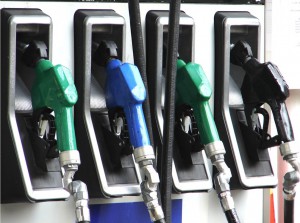
With oil producing countries cutting production, gas prices have been rising for the last two weeks.
With the Christmas and New Year holiday approaching, the effort by the Organization of Petroleum Exporting Countries and non-OPEC producers such as Russia to curtail production is beginning to force up the price of the gasoline used by American consumers.
AAA reported the national average has increased for 14 days in a row following the OPEC oil production agreement Nov. 30. The average price of gasoline of $2.21 per gallon is up three cents per gallon on the week and two cents per gallon on the month. The national average is up 20 cents compared to the same date last year, according to AAA.
Last month, OPEC agreed to trim output by 1.2 million barrels per day beginning January 2017 and markets have continued to react to the production cut agreement with crude oil prices hitting an 18-month high, AAA noted.
The retail price of gasoline also has steadily increased following the news of the OPEC agreement. The real test of the deal’s effectiveness and continued market impacts will depend whether OPEC members, many of whom are strapped for cash, and Russia, which is also facing its own set of economic challenges, can deliver the the promised production cuts.
Meanwhile, the average gas prices are below $2 per gallon in only four states including: Oklahoma where the price is $1.96 per gallon, Missouri at $1.97, Arkansas at $1.98 and Texas at $1.99.
The largest weekly increases came in Michigan $2.30 (+9 cents), Indiana $2.21 (+9 cents) and Ohio $2.22 (+6 cents).
Pump prices in the Great Lakes remain volatile and continue to be impacted by increasing oil prices. Although prices are up in every state in the region this week, Michigan ($2.30) is ranked in the nation’s top 15 most expensive markets for retail gasoline, AAA reported.
(OPEC deal likely to push gas prices higher. Click Here for the story.)
During the past month, the Midwest region has seen some of the most dramatic monthly price increases compared with other parts of the country with the price of gasoline in Michigan 19 cent per gallon. Prices also have increased in Ohio and Indiana have increased by 18 cents per gallon and by 12 cents per gallon in Illinois.
The increases can likely be attributed to increases in global crude oil prices and planned maintenance at BP’s refinery in Whiting, Indiana, which lasted throughout the month of November.
Pump prices in midcontinent states remained relatively stable. Despite recent price increases along the southern coast, the Central and Southern regions remain the cheapest markets for retail gasoline.
(Click Here for more about whether Trump will choose Big Oil or Big Corn.)
The largest monthly increases include: Michigan (+23 cents), Indiana (+22 cents), Ohio (+21 cents), Illinois (+15 cents), Kentucky (+13 cents) and Delaware (+12 cents).
The West Coast is one of the only regions in the country to see prices drop on the week with the exception of Hawaii where drivers are now paying seven cents more per gallon.
Last weekend, OPEC and non-OPEC producers reached their first deal since 2001 to limit oil output in an effort to reduce global over supply and rebalance the market. Producers from outside the 14-country group agreed to reduce output by 558,000 barrels per day.
(Obama admin upholds 54.5 mpg rules – but will new Trump admin reverse course? Click Here for the story.)
Of that amount, Russia has agreed to cut 300,000 barrels per day with the remaining non-OPEC members cutting the remaining 258,000 barrels to reach the agreed upon levels. At the close of Friday’s formal trading session on the NYMEX, WTI was up 66 cents to settle at $51.50 per barrel.
